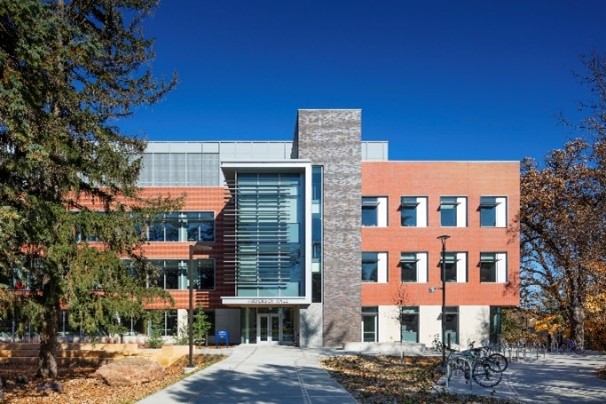 Across the world, geneticists are extracting DNA with sequencers, chemists are using centrifuges to separate cellular components, computational scientists are developing and running new AI engines, and engineers are performing wind tunnel tests – all in laboratories designed to cater to the discipline’s individual needs. Although each workroom’s function is unique, there is a hidden, crucial component fueling each scientific endeavor: energy.
Across the world, geneticists are extracting DNA with sequencers, chemists are using centrifuges to separate cellular components, computational scientists are developing and running new AI engines, and engineers are performing wind tunnel tests – all in laboratories designed to cater to the discipline’s individual needs. Although each workroom’s function is unique, there is a hidden, crucial component fueling each scientific endeavor: energy.
From fume heads to ultra-low temperature freezers and environmental chambers, these tools are incredibly energy-hungry and can present unique challenges for facilities to meet sustainability goals. Laboratories can require up to 10 times more energy per square foot than a standard commercial office building.
Ingenious strategies and innovative techniques can curtail the energy appetite of laboratories without compromising the pursuit of knowledge or the advancement of technology. As one of the first large firms to sign the AIA 2030 commitment to pursue energy reduction and carbon neutrality in our work, Page’s approach creates higher-performing and healthier buildings that help our clients reduce their energy impact while increasing their research opportunities.
What is EUI?
Energy Use Intensity (EUI) indicates efficiency in a building’s design and operations, expressed as kilo British thermal units per square foot (kBTU/sf). In other words, EUI is the annual expected or actual use of electricity and natural gas, calculated by dividing total energy consumed by the gross floor area. A lower metric means a more efficient facility.
Think of EUI as miles per gallon, which is a projection of a vehicle’s expected consumption. Depending on the fuel type, car components, and, most importantly, how someone operates the car, the efficiency increases or decreases. For a building, an energy model helps predict the expected energy used, factoring in building systems and envelopes, temperature set points, ventilation rates, and schedules of operations. The model is used to set an energy target before design, benchmark a building’s performance compared to similar building types, evaluate energy conservation measures, and improve building performance.
Strategies to Reduce EUI
 To achieve net-zero carbon emissions, we first implement strategies to reduce a facility’s energy consumption and then offset the remainder with a renewable energy source on site – like solar panels or geothermal wells.
To achieve net-zero carbon emissions, we first implement strategies to reduce a facility’s energy consumption and then offset the remainder with a renewable energy source on site – like solar panels or geothermal wells.
A building’s envelope is the first line of defense against energy loss. By optimizing insulation, glazing, and shading systems, while ensuring the envelope is air-tight, we can minimize heat transfer through walls, roofs, and windows. The result? A more comfortable environment that demands less heating and cooling.
To keep laboratories safe and clean, the air needs to be constantly replaced through outside ventilation. This continuous cycle removes potentially hazardous or contaminated air and replaces it with fresh, clean air, while also conditioning the incoming ventilation to meet precise temperature and humidity levels. Many experiments hinge on a meticulously controlled environment, demanding the perfect conditions for safe tests. But the energy required to uphold these delicate balances consistently contributes to the overall energy demand of laboratory HVAC systems. High-efficiency chillers, energy-recovery ventilation, advanced control systems, and occupancy and daylight sensors can improve the energy efficiency of the HVAC systems.
After we identify how to reduce consumption from a whole building perspective, we look to reduce the energy consumption of lab equipment. For example, fume hoods are notoriously the most energy-intensive tool, but a more sophisticated system with variable airflow volumes can optimize its use. Emerging technologies – like smart sensors and energy-efficient equipment – target laboratory apparatuses to meet sustainability goals while prioritizing safety codes.
LEED Platinum: Carleton Integrated Science Complex
 Carleton College’s science complex is a testament to what’s possible when modernizing a building. Adapting two existing facilities and demolishing a third to create space for a high-performance addition, the team designed a new sun-splashed atrium that unites the structures and channels light throughout the building.
Carleton College’s science complex is a testament to what’s possible when modernizing a building. Adapting two existing facilities and demolishing a third to create space for a high-performance addition, the team designed a new sun-splashed atrium that unites the structures and channels light throughout the building.
To help the college achieve its mandate of not increasing campus energy consumption through new construction or renovation projects, Page's design process incorporated energy modeling into the project’s earliest phase. This approach reduced the predicted EUI and was coupled with a new geothermal system and the allocation campus of wind power. The project – with an EUI of 116.6 kBTU/sf – achieved a 38.4% decrease in overall energy consumption — despite the 33% increase in total square footage — and a 43.2% energy cost-savings reduction, earning a USGBC LEED Platinum certification.
Through a collective effort, architects and stakeholders can pave the way for greener, more resource-efficient environments that contribute to scientific advancement and a healthier planet.